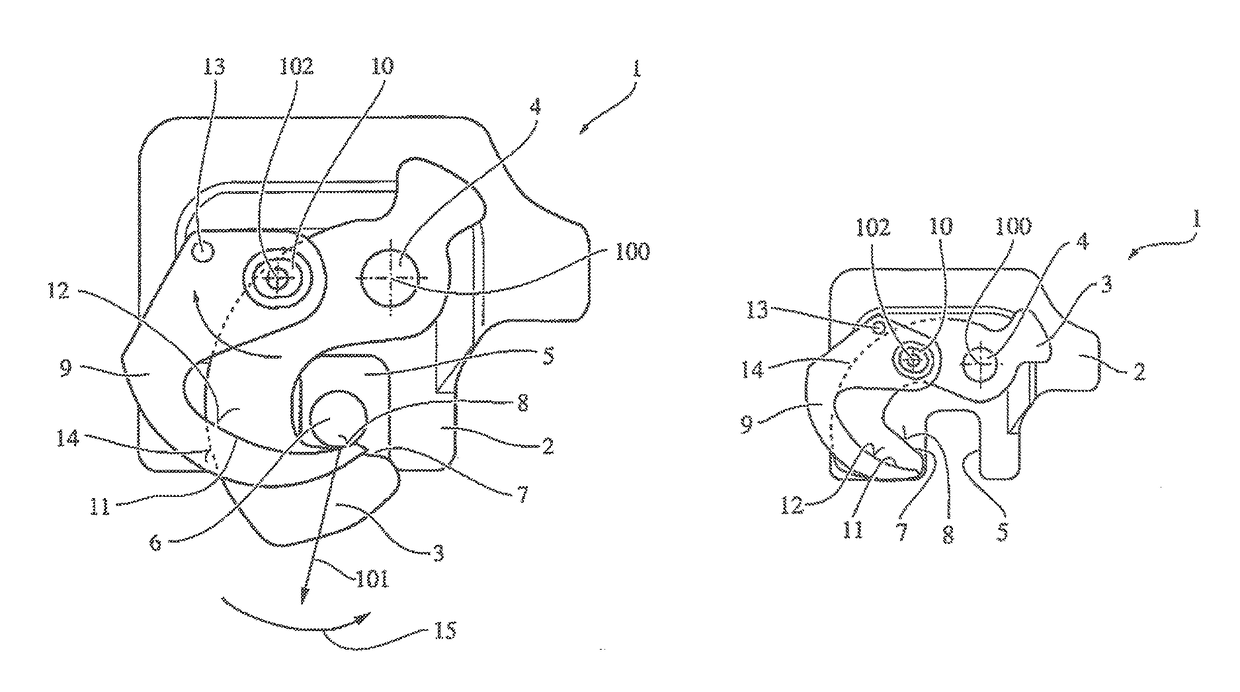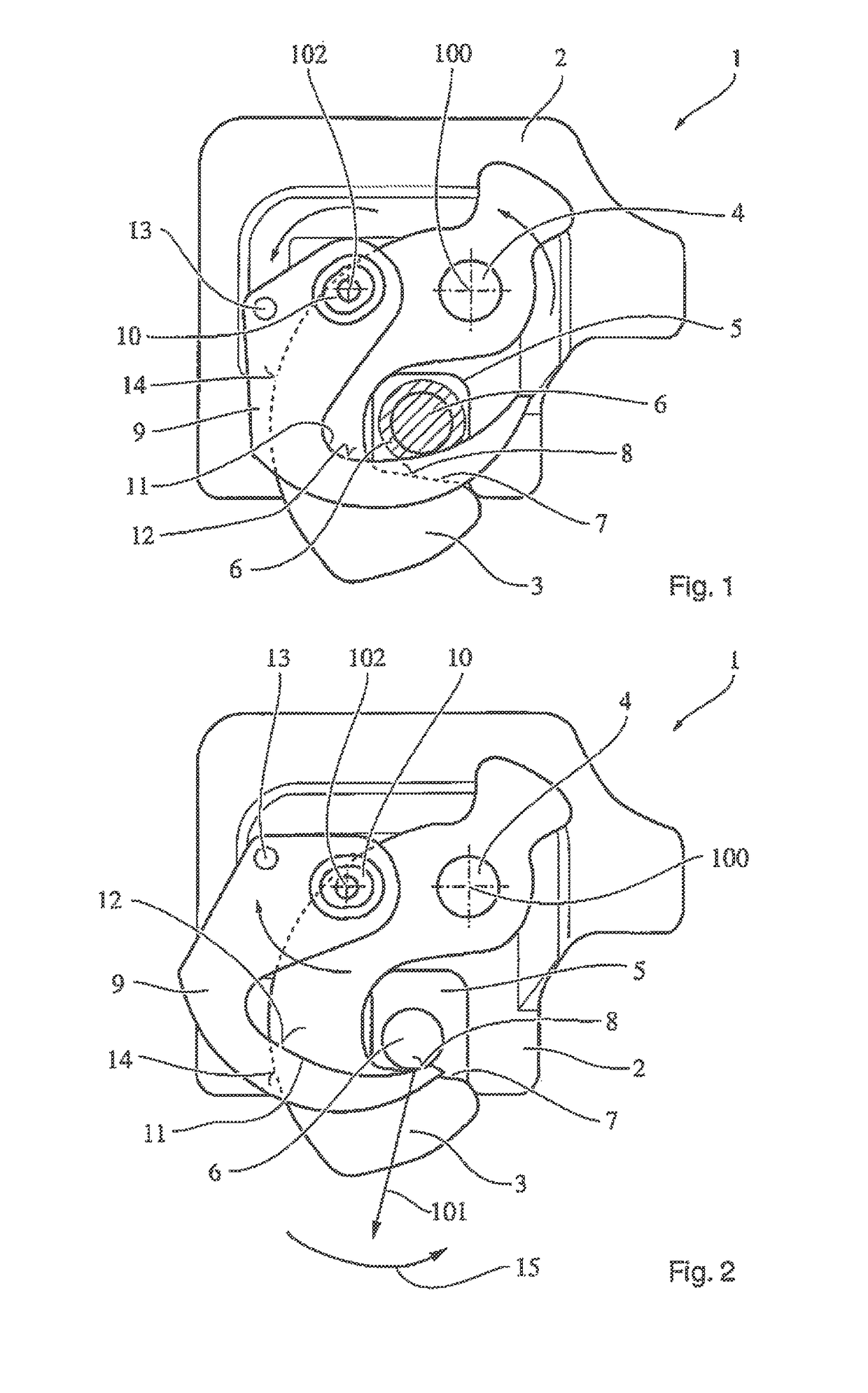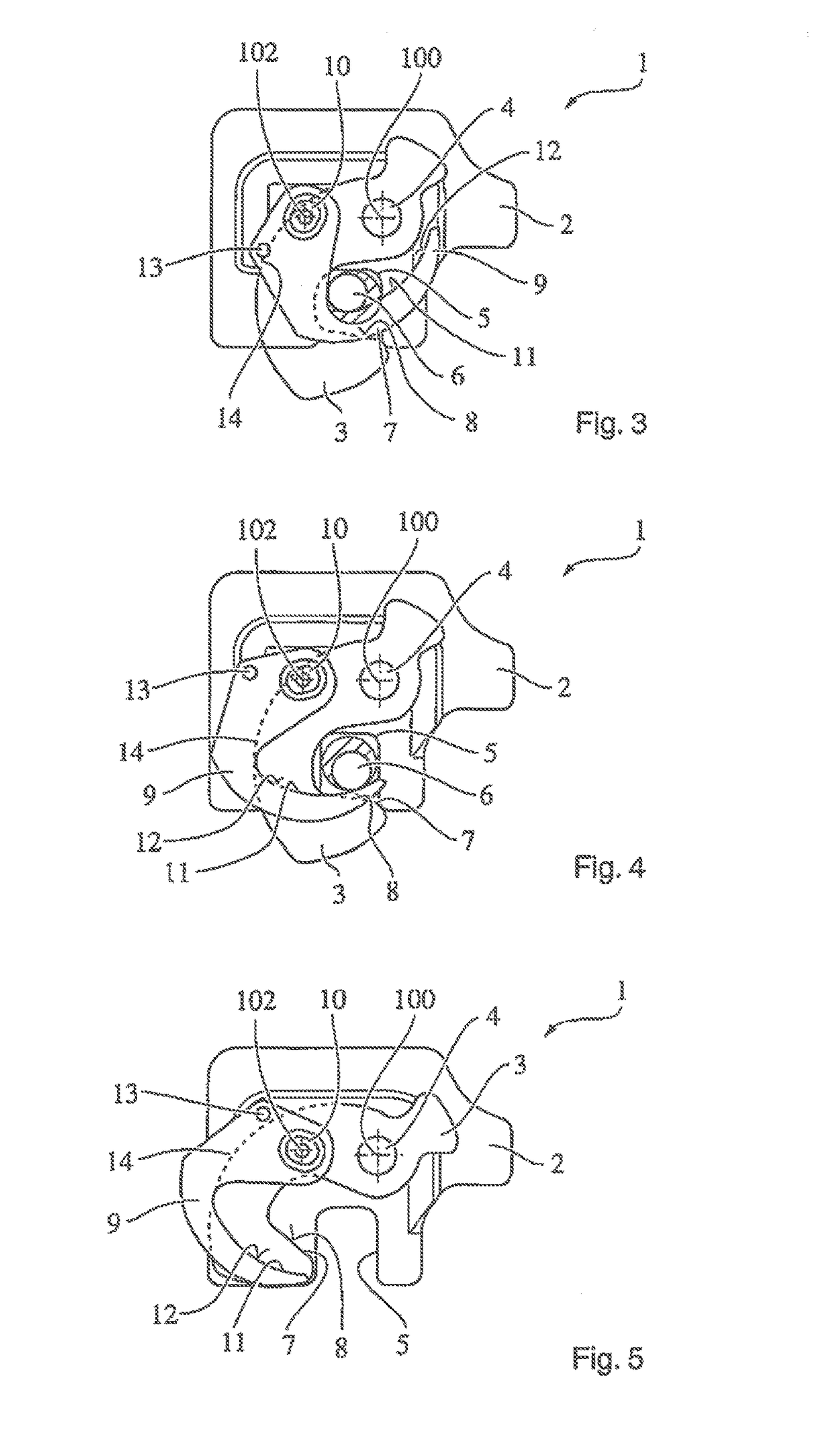Locking device and a vehicle seat
a technology of locking device and vehicle seat, which is applied in the direction of vehicle seats, vehicle components, vehicle arrangement, etc., can solve the problems of increasing noise, and achieve the effects of reducing noise, reducing noise, and compact construction
- Summary
- Abstract
- Description
- Claims
- Application Information
AI Technical Summary
Benefits of technology
Problems solved by technology
Method used
Image
Examples
Embodiment Construction
[0022]In the different figures, the same parts are always provided with the same reference signs and are thus, as a rule, only named or mentioned once.
[0023]FIGS. 1 to 5 show a schematic view of the locking device (1) according to an exemplary embodiment of the present invention in different operating states.
[0024]The locking device (1) comprises a basic structure (2) in the form of a base plate or a housing, in which a swivel-mounted catch (3) is arranged via a first bearing journal (4). The basic structure (2) also comprises a retainer region (5) shaped like a jaw for receiving a counter element (6). The counter element (6) comprises, for example, a journal which has to be locked in the retainer region (5) by means of the locking device (1). It is conceivable that a vehicle seat or another component of a car is to be reversibly and releasably fixed to the body of the vehicle or in the interior of the vehicle by means of the locking device (1).
[0025]To achieve this, the catch (3) c...
PUM
 Login to View More
Login to View More Abstract
Description
Claims
Application Information
 Login to View More
Login to View More - R&D
- Intellectual Property
- Life Sciences
- Materials
- Tech Scout
- Unparalleled Data Quality
- Higher Quality Content
- 60% Fewer Hallucinations
Browse by: Latest US Patents, China's latest patents, Technical Efficacy Thesaurus, Application Domain, Technology Topic, Popular Technical Reports.
© 2025 PatSnap. All rights reserved.Legal|Privacy policy|Modern Slavery Act Transparency Statement|Sitemap|About US| Contact US: help@patsnap.com



